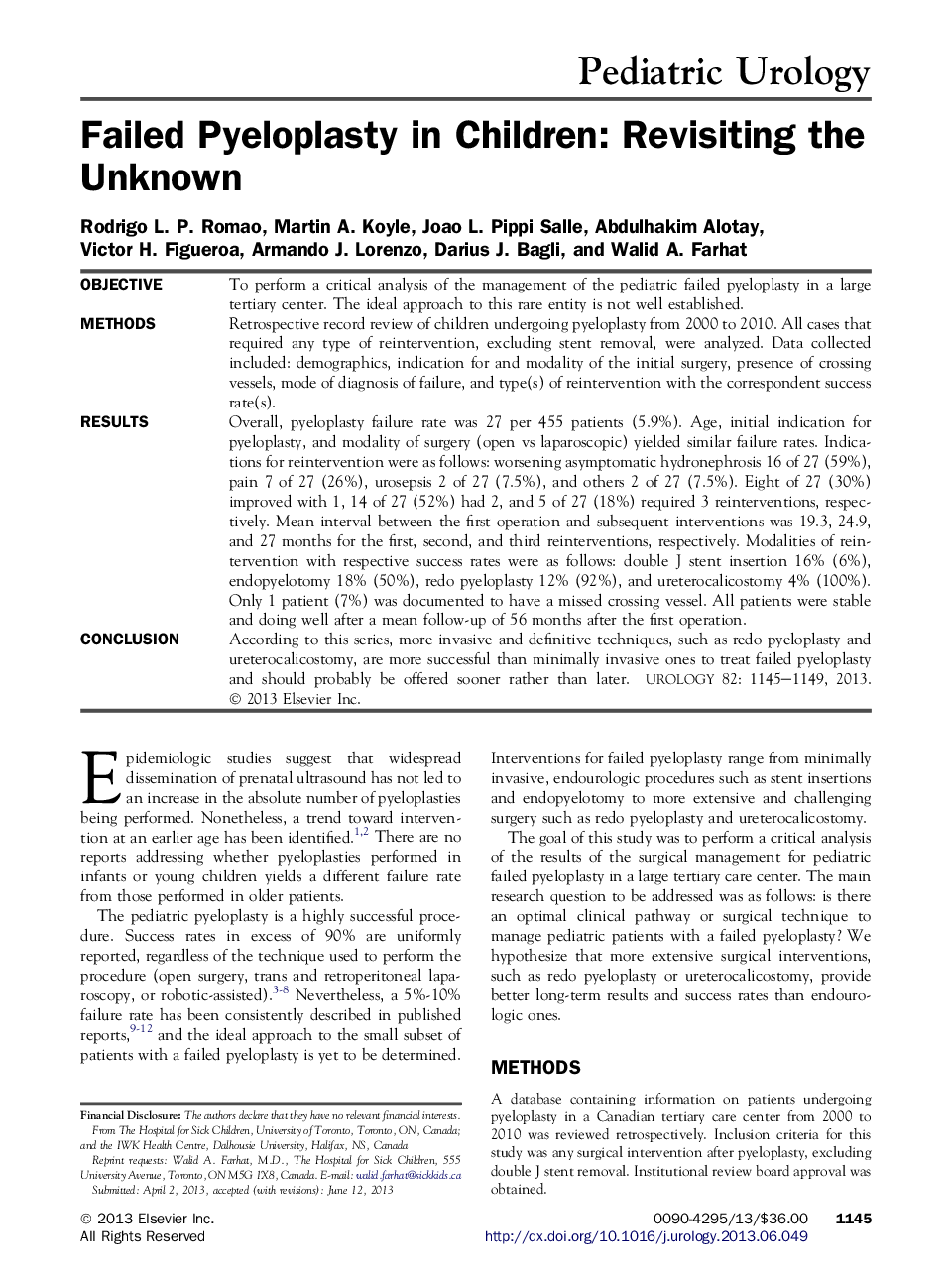| Article ID | Journal | Published Year | Pages | File Type |
|---|---|---|---|---|
| 3899249 | Urology | 2013 | 5 Pages |
ObjectiveTo perform a critical analysis of the management of the pediatric failed pyeloplasty in a large tertiary center. The ideal approach to this rare entity is not well established.MethodsRetrospective record review of children undergoing pyeloplasty from 2000 to 2010. All cases that required any type of reintervention, excluding stent removal, were analyzed. Data collected included: demographics, indication for and modality of the initial surgery, presence of crossing vessels, mode of diagnosis of failure, and type(s) of reintervention with the correspondent success rate(s).ResultsOverall, pyeloplasty failure rate was 27 per 455 patients (5.9%). Age, initial indication for pyeloplasty, and modality of surgery (open vs laparoscopic) yielded similar failure rates. Indications for reintervention were as follows: worsening asymptomatic hydronephrosis 16 of 27 (59%), pain 7 of 27 (26%), urosepsis 2 of 27 (7.5%), and others 2 of 27 (7.5%). Eight of 27 (30%) improved with 1, 14 of 27 (52%) had 2, and 5 of 27 (18%) required 3 reinterventions, respectively. Mean interval between the first operation and subsequent interventions was 19.3, 24.9, and 27 months for the first, second, and third reinterventions, respectively. Modalities of reintervention with respective success rates were as follows: double J stent insertion 16% (6%), endopyelotomy 18% (50%), redo pyeloplasty 12% (92%), and ureterocalicostomy 4% (100%). Only 1 patient (7%) was documented to have a missed crossing vessel. All patients were stable and doing well after a mean follow-up of 56 months after the first operation.ConclusionAccording to this series, more invasive and definitive techniques, such as redo pyeloplasty and ureterocalicostomy, are more successful than minimally invasive ones to treat failed pyeloplasty and should probably be offered sooner rather than later.
